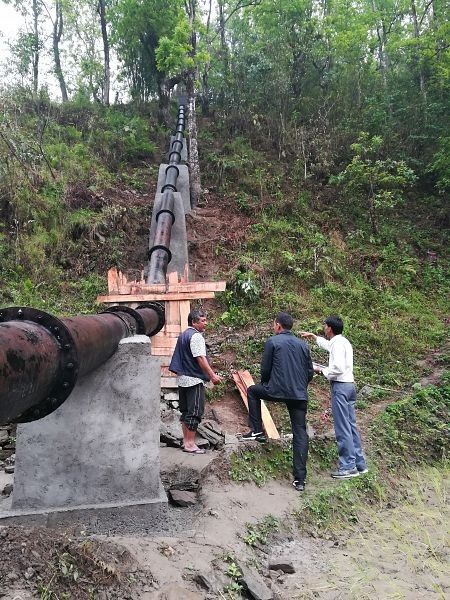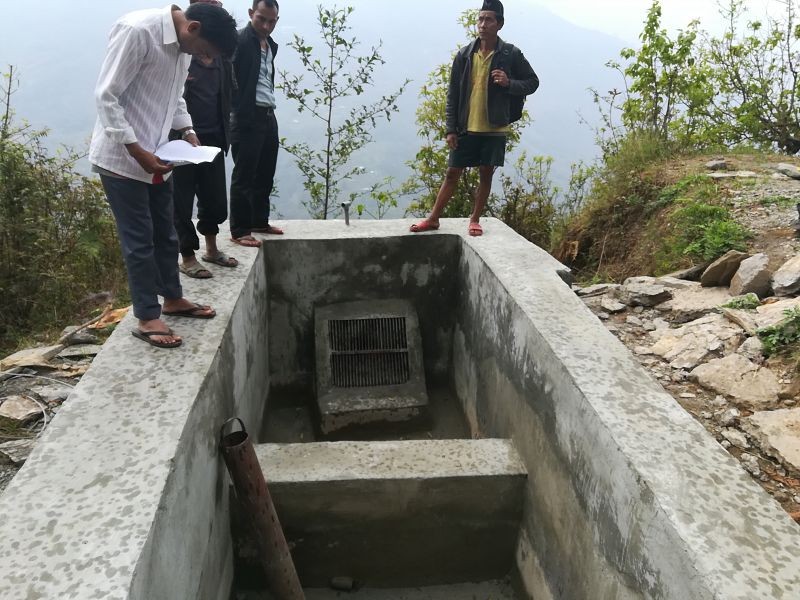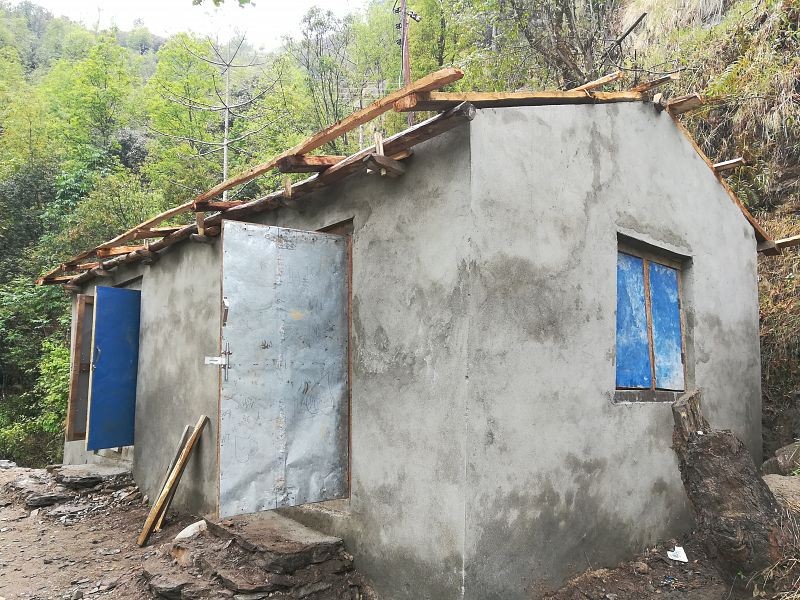This project aims to contribute to the vision of “Building Back Better” to rebuild disaster-resilient communities by restoring sustainable energy access. The contribution will be in the form of the restoration of the earthquake-struck micro hydro systems in order that the livelihood options for communities and individuals can be re-established.
The 7.8 M (magnitude) earthquake that struck Nepal on April 25th 2015 caused massive destruction. Among other things, it disrupted the power supply from many community-based micro-hydropower (MHP) systems. The epicentre of the earthquake was in the Gorkha district in central Nepal, where Practical Action had supported the establishment of seven MHP systems between 2013 and 2014. These systems had led to increased load factors and revenue for associated enterprises and were having a positive impact on local livelihoods. The earthquake and subsequent aftershocks caused damage to various degrees to these MHPs, all of which stopped functioning.
This project aimed to contribute to the vision of “Building Back Better” in post-disaster rebuilding by restoring sustainable energy access. Specifically, it rehabilitated three damaged MHP systems using an earthquake-resilient design. To carry out the project, the Nepalese branch of Practical Action partnered with Goreto Gorkha, a local organisation who provided support in the field.

Technology, Operations & Maintenance
The first phase of the project entailed a detailed feasibility study of six damaged MHPs and the drafting of earthquake-resilient designs, focusing particularly on the powerhouses and distribution systems. Following discussions with the communities concerned, three systems (Andheri Khola Daraundi Dovan, Jhyalla Bhumi II and Tamsyo) were selected for rehabilitation. The feasibility reports were shared with the communities concerned in an effort to create a sense of engagement and ownership. The reconstruction works were contracted through a tendering process and were closely monitored. Testing and commissioning of the three systems was finalised in September 2017, since when the systems have been operational. A follow up survey in 2018 is expected to yield data on output, income generation and the type of energy demand created.
The feasibility reports were shared with the communities concerned in an effort to create a sense of engagement and ownership. The reconstruction works were contracted through a tendering process and were closely monitored. Testing and commissioning of the three systems was finalised in September 2017, since when the systems have been operational. A follow up survey in 2018 is expected to yield data on output, income generation and the type of energy demand created.
Delivery Model & Financial Management
The project supported the purchase of non-local materials and components, as well as their transportation. The cost of local materials, as well as an element of the labour costs, was borne by the communities themselves.
The communities were heavily involved in the rehabilitation of the MHPs. A three-member reconstruction committee was formed in each participating community. Continuous dialogue with the existing MHP user committees, as well as with the local entrepreneurs, was crucial for the successful restoration of the MHPs. Additionally, the project included a capacity-building component, which strengthened the operational and management skills of the committees and their ability to promote productive end-uses and to set up local energy-using enterprises.
Environmental Issues
The project contributed to replacing the use of fossil fuels by restoring a sustainable electricity source that had been used successfully prior to the earthquake. Following the earthquake, most households reverted to using kerosene lamps and candles for their lighting needs. Only a small number of households could afford to purchase solar home systems to meet their basic energy needs.Social Issues
The participating communities were themselves earthquake victims and most households had seen their houses and livelihood options destroyed. Gaining the commitment of communities for the reconstruction of the MHPs was, therefore, challenging and led to delays in implementation. Due to continuous engagement of the implementing organisations, the project was nevertheless successfully completed.
The project strived to address gender disparities by encouraging the participation of women in capacity-building and discussions. One of the three members of each reconstruction committee is a woman. The presence of representatives from marginalised communities at meetings was also encouraged.
Results & Impact
 The rehabilitated MHPs enabled 585 households and various schools to be reconnected, as well as returning ten electricity-based rural enterprises to operation. In total, it is estimated that 2570 people benefited from the project. Ten committee members and operators received three-day capacity-building training. The three participating communities are seeing demand for the creation of new enterprises in food processing, manufacturing and ICT.
The rehabilitated MHPs enabled 585 households and various schools to be reconnected, as well as returning ten electricity-based rural enterprises to operation. In total, it is estimated that 2570 people benefited from the project. Ten committee members and operators received three-day capacity-building training. The three participating communities are seeing demand for the creation of new enterprises in food processing, manufacturing and ICT.
Replicability
The project was successful in raising awareness of the benefits of cost-efficient earthquake-resilient design among communities and decision-makers and has led to the initiation of another MHP rehabilitation project in the Dolakha district. Practical Action makes use of this and other experiences to actively advocate for earthquake-resilient MHP systems at governmental level. Members from the Ghorka District Coordination Committee, as well as other policymakers, have visited and jointly monitored the rehabilitated MHPs. The project worked closely with the Nepalese government’s Alternative Energy Promotion Center (AEPC), sharing reports and experiences.
Finally, the project improved the skills of the participating contractors in earthquake-resilient design and construction. Based on the project’s experience, a manual on earthquake-resilient design is being developed with the goal of including earthquake-resilient design in AEPC’s official MHP guidelines.
Lessons Learned
The project faced a number of challenges. Due to the loss of their livelihoods following the earthquake, and despite the eagerness to see their MHPs restored, the communities were initially unable to make the contributions that were required from their side. Following some delays, the communities finally committed themselves fully. Local elections further delayed the reconstruction works and a landslide caused additional damage to one of the systems. The project also had to contend with a skills gap among the building contractors, who were not used to earthquake-resilient construction.
The project overcame these challenges by Practical Action maintaining a strong presence in the field to continuously promote community engagement and actively support the contractors. The three systems were fully restored and the project has successfully demonstrated the benefits of cost-efficient earthquake-resilient design for MHPs. The project put a strong focus on reviving and expanding productive uses and energy demand from local enterprises as a way of ensuring the financial sustainability of the MHPs in the long term.
The restoration of livelihood options after a disaster can build the resilience required to cope with future disasters. Although the initial cost of earthquake-resilient MHP systems is higher than that of conventional ones, the design contributes to the long-term sustainability of the systems and, therefore, results in lower overall costs on a lifetime basis. In the wake of the 2015 earthquake, the Nepalese government has implemented stricter building codes in terms of resilient design for housing. Practical Action advocates for this approach to be extended to MHP systems.
Projects with same technology
Interconnected Mini-grids for Intensive Rural Electrification in Nepal (IMIREN)
Micro Hydropower for the rural population in Cameroon
Projects in same country
Interconnected Mini-grids for Intensive Rural Electrification in Nepal (IMIREN)
Promoting the Long-Term Use of Micro-Hydro Systems by Providing Energy to Rural Enterprises in Nepal and India
This projects aim was to ensure the sustained operation of existing micro-hydro plants through rehabilitation, optimisation, increased financial stability, capacity-building and management support